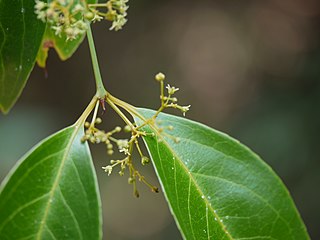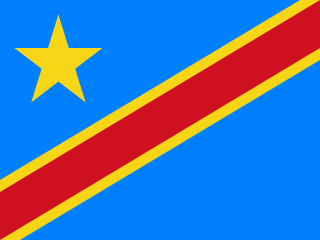Microdesmis is a genus of plant of the family Pandaceae. It is native to tropical Africa, China and Southeast Asia.
- Microdesmis afrodecandraFloret, A.M.Louis & J.M.Reitsma - Gabon
- Microdesmis camerunensisJ.Léonard - Cameroon, Gabon, Congo-Brazzaville
- Microdesmis caseariifoliaPlanch. ex Hook -Guangdong, Guangxi, Hainan, Yunnan, Bangladesh, Cambodia, Borneo, Sumatra, Laos, Malaysia, Myanmar, Philippines, Thailand, Vietnam
- Microdesmis haumanianaJ.Léonard - Gabon, Congo-Brazzaville, Zaïre, Angola
- Microdesmis kasaiensisJ.Léonard - Zaïre
- Microdesmis keayanaJ.Léonard - Benin, Ghana, Guinea, Ivory Coast, Liberia, Sierra Leone, Togo, Nigeria
- Microdesmis klaineiJ.Léonard - Gabon
- Microdesmis magallanensis(Elmer) Steenis - Luzon, Sibuyan
- Microdesmis pierlotianaJ.Léonard - Cameroon, Gabon, Congo-Brazzaville, Zaïre, Central African Republic
- Microdesmis puberulaHook.f. ex Planch - widespread across central Africa from Nigeria east to Uganda, south to Angola
- Microdesmis yafunganaJ.Léonard - Zaïre

Sclerocroton is a plant genus of the family Euphorbiaceae first described as a genus in 1845. There a total of 6 known species in this genus; 5 species in continental Africa and a single species in Madagascar.
- Sclerocroton carterianus(J.Léonard) Kruijt & Roebers - Liberia, Ivory Coast, Sierra Leone
- Sclerocroton cornutus(Pax) Kruijt & Roebers - C + SC Africa from Cameroon to Zimbabwe plus Ivory Coast
- Sclerocroton integerrimusHochst. - C + S Africa from Zaire to KawZulu-Natal, plus Guinea
- Sclerocroton melanostictus(Baill.) Kruijt & Roebers - Madagascar
- Sclerocroton oblongifolius(Müll.Arg.) Kruijt & Roebers - Zaire, Angola, Zambia, Zimbabwe
- Sclerocroton schmitzii(J.Léonard) Kruijt & Roebers - Zaire, Rwanda, Burundi, Zambia, Zimbabwe

Syngonanthus is a genus of flowering plants in the family Eriocaulaceae. It is native to tropical Africa and to Latin America.
Eremospatha is a genus of climbing flowering plants in the palm family found in tropical Africa. These rattans are uncommon in cultivation and poorly understood by taxonomists. Closely related to Laccosperma, they are differentiated by the near complete absence of bracts and bracteoles. The name is from Greek meaning "without a spathe".

Stylochaeton is a genus of flowering plants in the family Araceae that is native to Africa. Stylochaeton are rhizomatous with hastate leaves. Flowering in this genus is said to be quite uncommon. Stylochaeton is the sole genus in the tribe Stylochaetoneae.

Cercestis is a genus of flowering plants in the family Araceae. The species in this genus are all climbers and are native to Africa. At intervals along the stem they produce long leafless shoots called flagella. Many of the species in Cersestis show signs of fenestration.

Culcasia is a genus of flowering plants in the family Araceae, native to tropical Africa. Most of its species are climbers and resemble Cercestis, except that they do not produce flagella.
- Culcasia angolensisWelw. ex Schott - western + central Africa from Senegal to Angola
- Culcasia annetiiNtépé-Nyamè - Ivory Coast, Cameroon, Liberia
- Culcasia bosiiNtépé-Nyamè - Cameroon, Gabon, Congo-Brazzaville
- Culcasia brevipetiolataBogner - Gabon
- Culcasia caudataEngl. - Zaïre
- Culcasia dinklageiEngl - western + central Africa from Liberia to Zaïre
- Culcasia ekongoloiNtépé-Nyamè - central Africa from Nigeria to Zaïre
- Culcasia falcifoliaEngl. - central Africa from Gabon east to Tanzania and south to Mozambique
- Culcasia glandulosaHepper - Ivory Coast, Sierra Leone, Liberia, Congo-Brazzaville
- Culcasia insulanaN.E.Br. - Zaïre, Cameroon, Gulf of Guinea Islands
- Culcasia lanceolataEngl. - Cameroon, Gabon
- Culcasia libericaN.E.Br. - Ivory Coast, Sierra Leone, Liberia, Togo
- Culcasia linearifoliaBogner - Cameroon, Gabon
- Culcasia loukandensisPellegr - Cameroon, Gabon, Congo-Brazzaville, Zaïre, Central African Republic
- Culcasia mannii(Hook.f.) Engl. - Cameroon, Gabon, Congo-Brazzaville, Nigeria, Equatorial Guinea
- Culcasia obliquifoliaEngl. - Cameroon, Gabon
- Culcasia orientalisMayo - Kenya, Tanzania, Mozambique, Zambia
- Culcasia panduriformisEngl. & K.Krause - Cameroon, Gabon
- Culcasia parvifloraN.E.Br. - western + central Africa from Liberia to Zaïre
- Culcasia rotundifoliaBogner - Gabon
- Culcasia sanagensisNtépé-Nyamè - Cameroon
- Culcasia scandensP.Beauv. - western + central Africa from Liberia to Angola
- Culcasia seretiiDe Wild - western + central Africa from Liberia to Zaïre
- Culcasia simiarumNtépé-Nyamè - western Africa from Ivory Coast to Cameroon
- Culcasia striolataEngl. - western + central Africa from Liberia to Congo-Brazzaville
- Culcasia tenuifoliaEngl. - western + central Africa from Liberia to Zaïre
- Culcasia yangambiensisLouis & Mullend. - Congo-Brazzaville, Zaïre

Schizachyrium is a widespread genus of plants in the grass family. The name is derived from the Ancient Greek words σχίζειν, meaning "to split," and ἄχυρον, meaning "chaff." It refers to either the glume or the toothed lemmas.

Elymandra is a genus of African and South American plants in the grass family. Most known species are native to Africa; one is found in Brazil.
Rhytachne is a genus of plants in the grass family. They grow principally in wet savannahs in Africa and the Americas. More specifically, they tend to prefer transitional zones between marshes and drier upland savannahs. In the Americas the genus can be found from southern Mexico and Cuba south to northern Argentina, while in Africa it is present in Sub-Saharan Africa, including in Madagascar. Twelve species are included, of which nine are African, two are American, and one, Rhytachne subgibbosa, is found on both continents. The genus is closely related to Coelorachis.

Ancistrorhynchus is a genus of flowering plants from the orchid family Orchidaceae. It contains 16 species native to tropical Africa.
Cuviera is a genus of flowering plants in the family Rubiaceae native to tropical Africa. It was originally described by Augustin Pyramus de Candolle in 1807 and is named after the French naturalist Georges Cuvier.

Craterispermum is a genus of flowering plants in the family Rubiaceae. It contains 16 species that occur in tropical Africa and Seychelles. It is the only genus in the tribe Craterispermeae, of which the divergence time is estimated at 34.8 million years ago.

Landolphia is a genus of flowering plants in the family Apocynaceae first described as a genus in 1806. They take the form of vines that scramble over host trees. Landolphia is native to tropical Africa.

Reissantia is a genus of flowering plants belonging to the family Celastraceae.
Guyonia is a genus of flowering plants belonging to the family Melastomataceae.
Donella is a genus of flowering plants belonging to the family Sapotaceae.
Dupineta is a genus of flowering plants belonging to the family Melastomataceae.
Abrus melanospermus is a species of flowering plant in the pea and bean family Fabaceae. It is native to Africa and Asia. It was also introduced to South America.

This article provides details of international football games played by the Zaire national football team from 1971 to 1997, when the Democratic Republic of the Congo was named Zaire.












